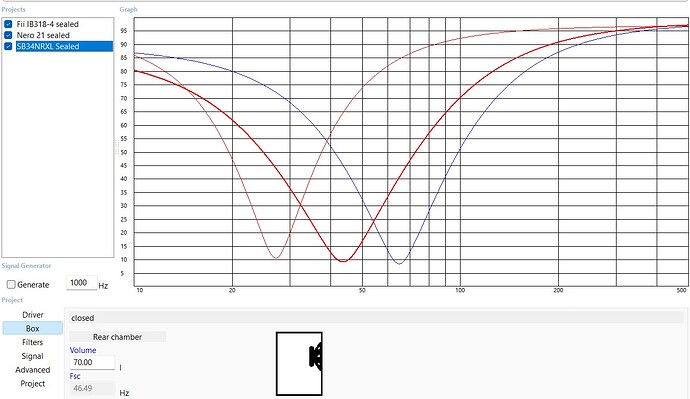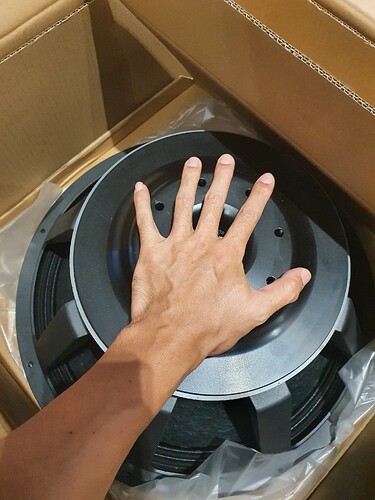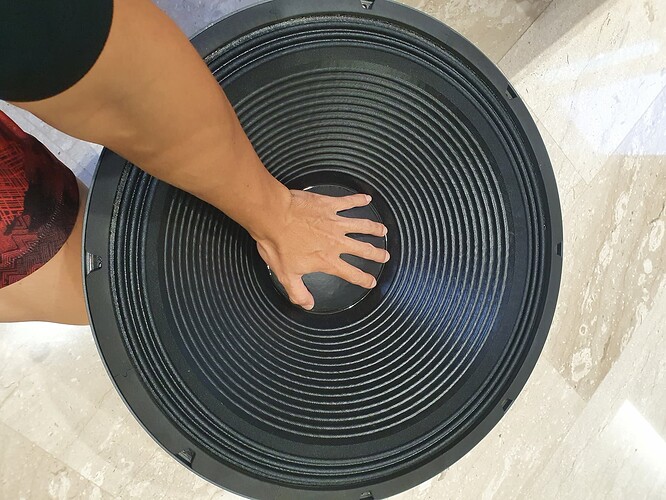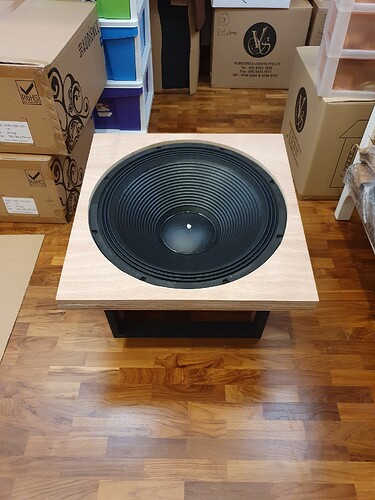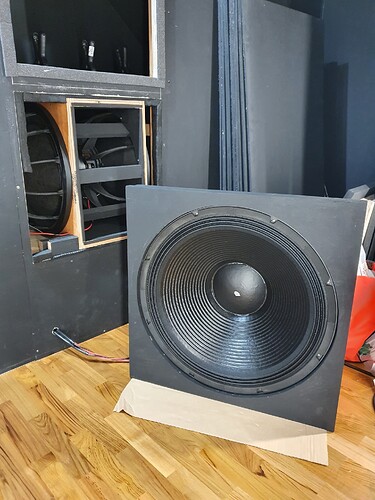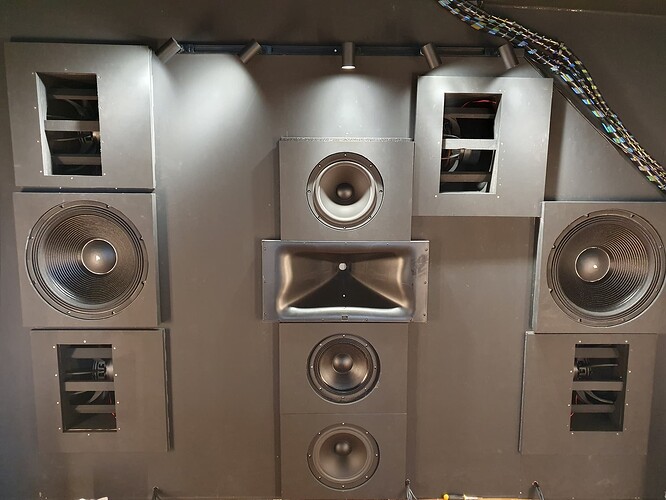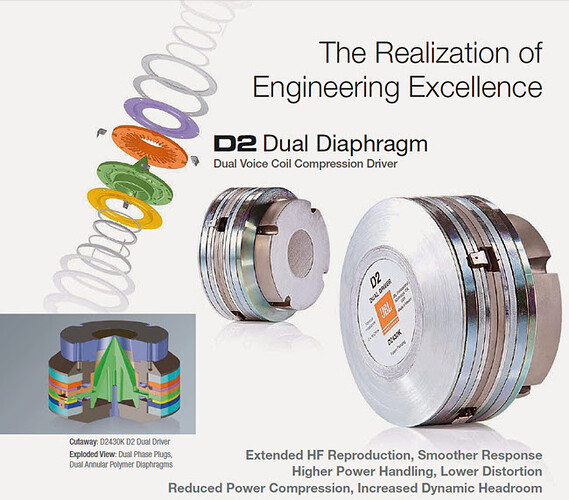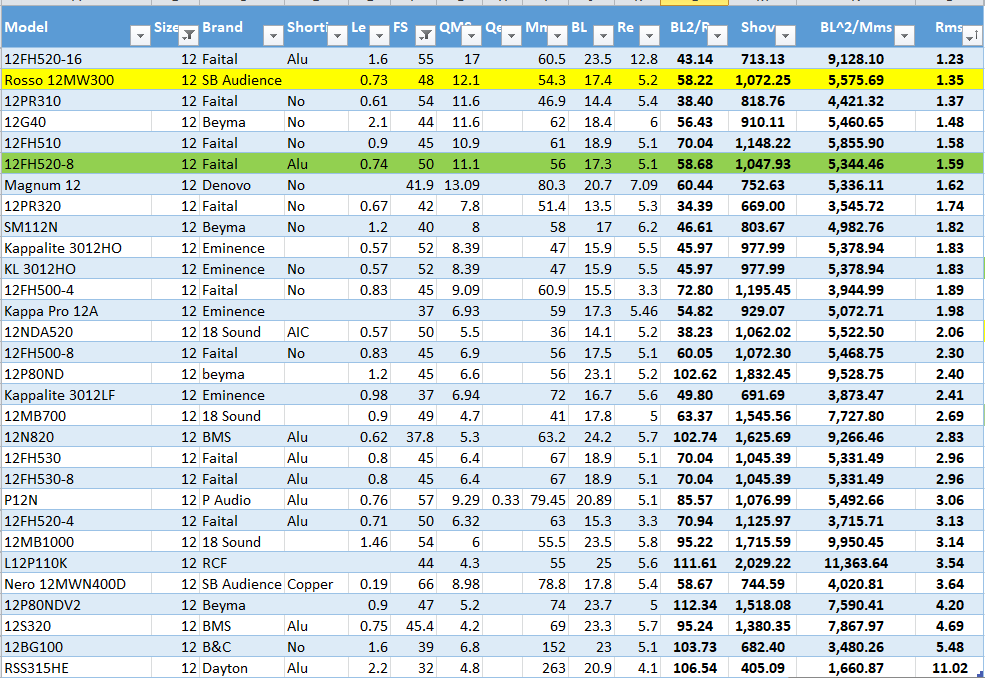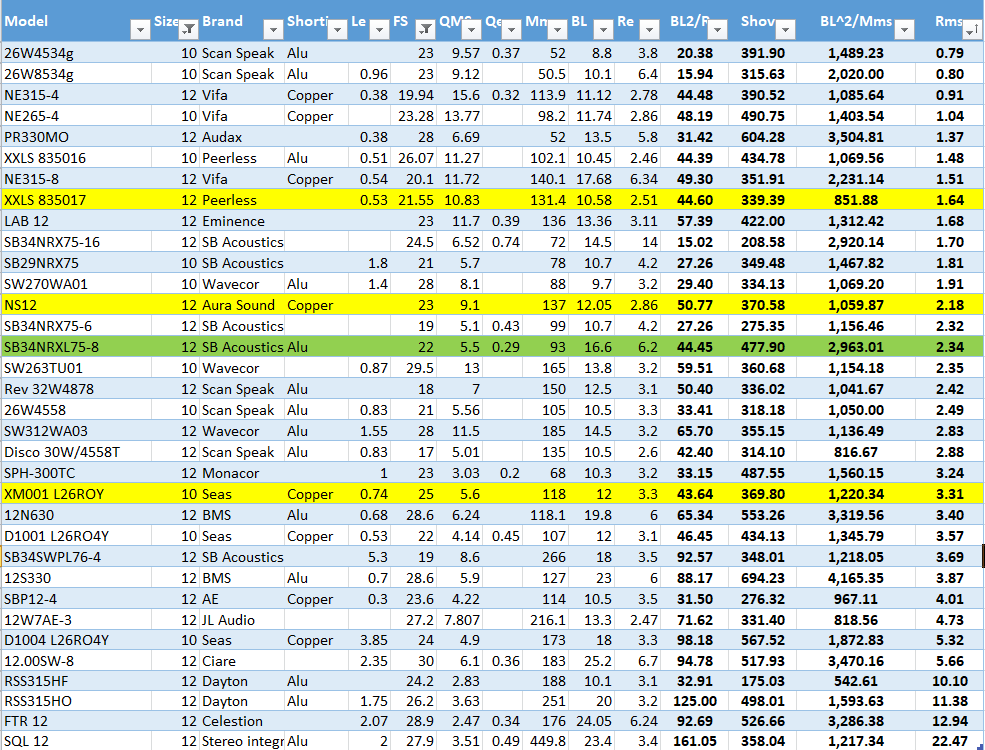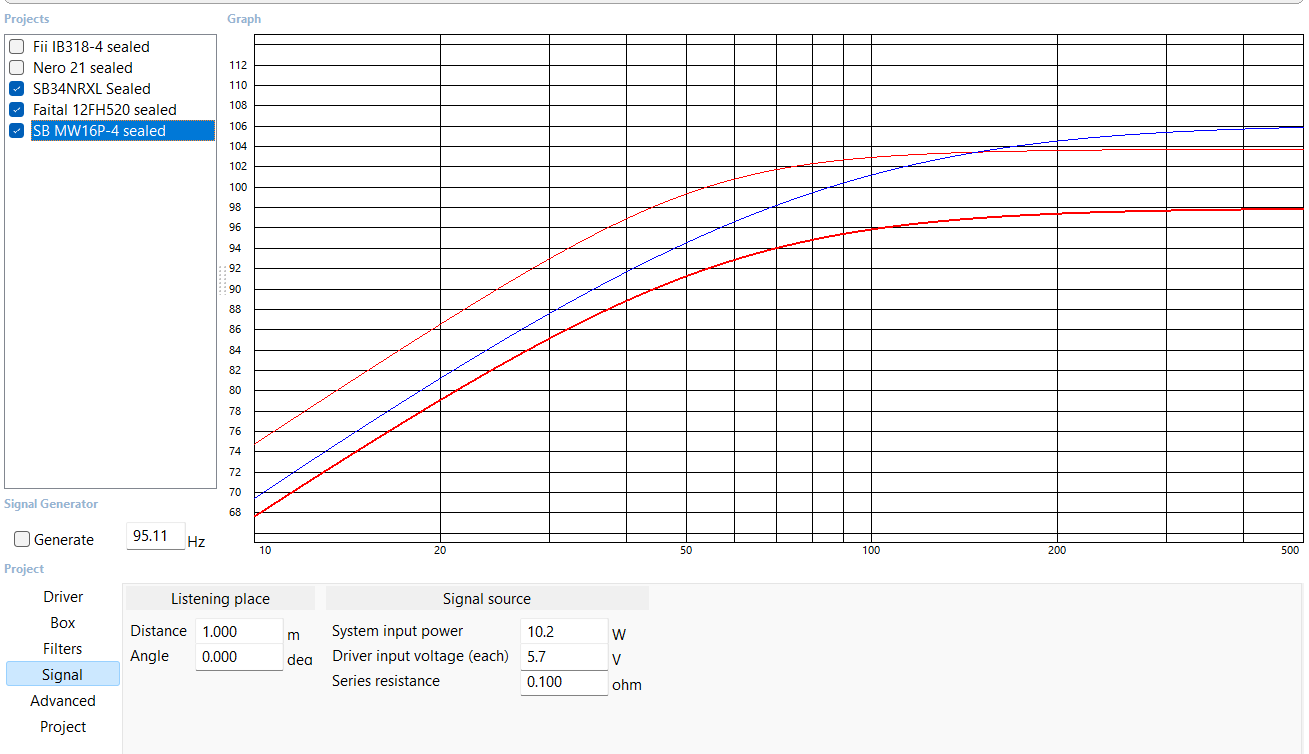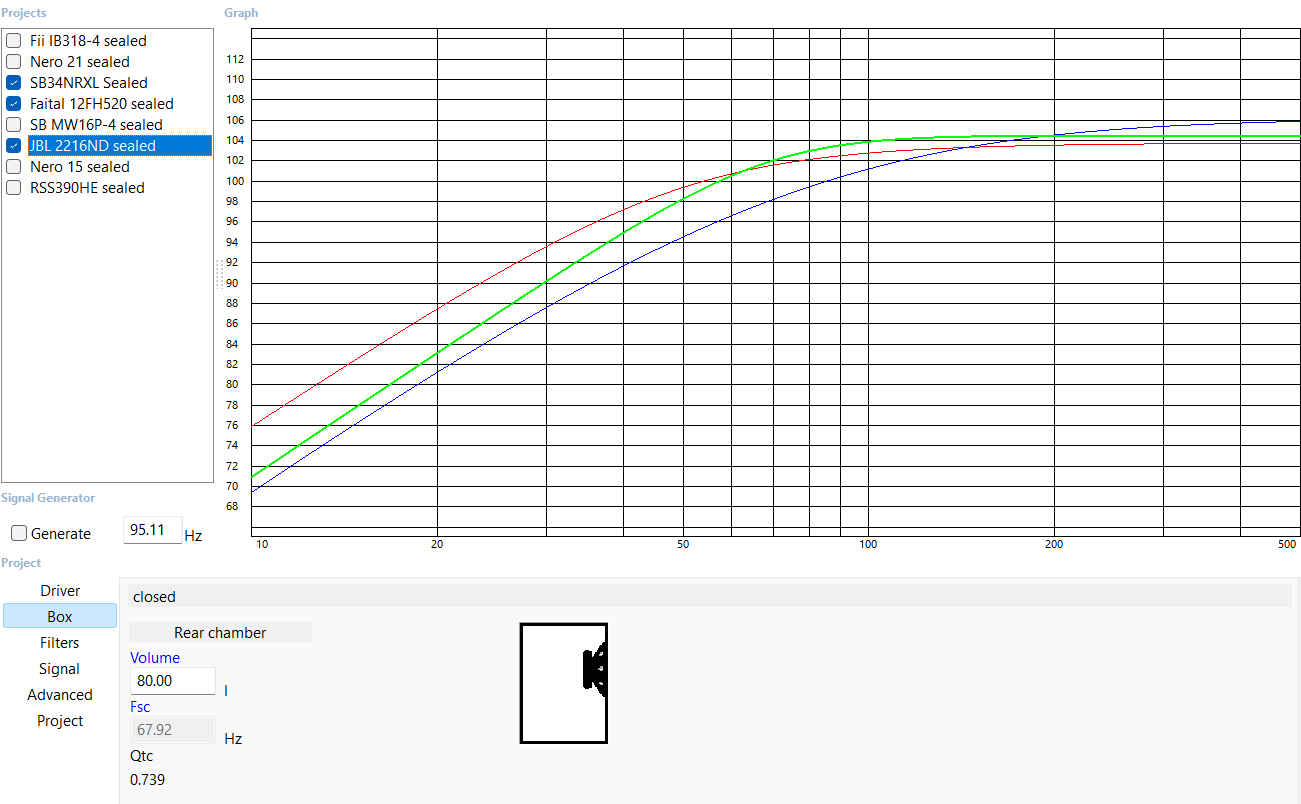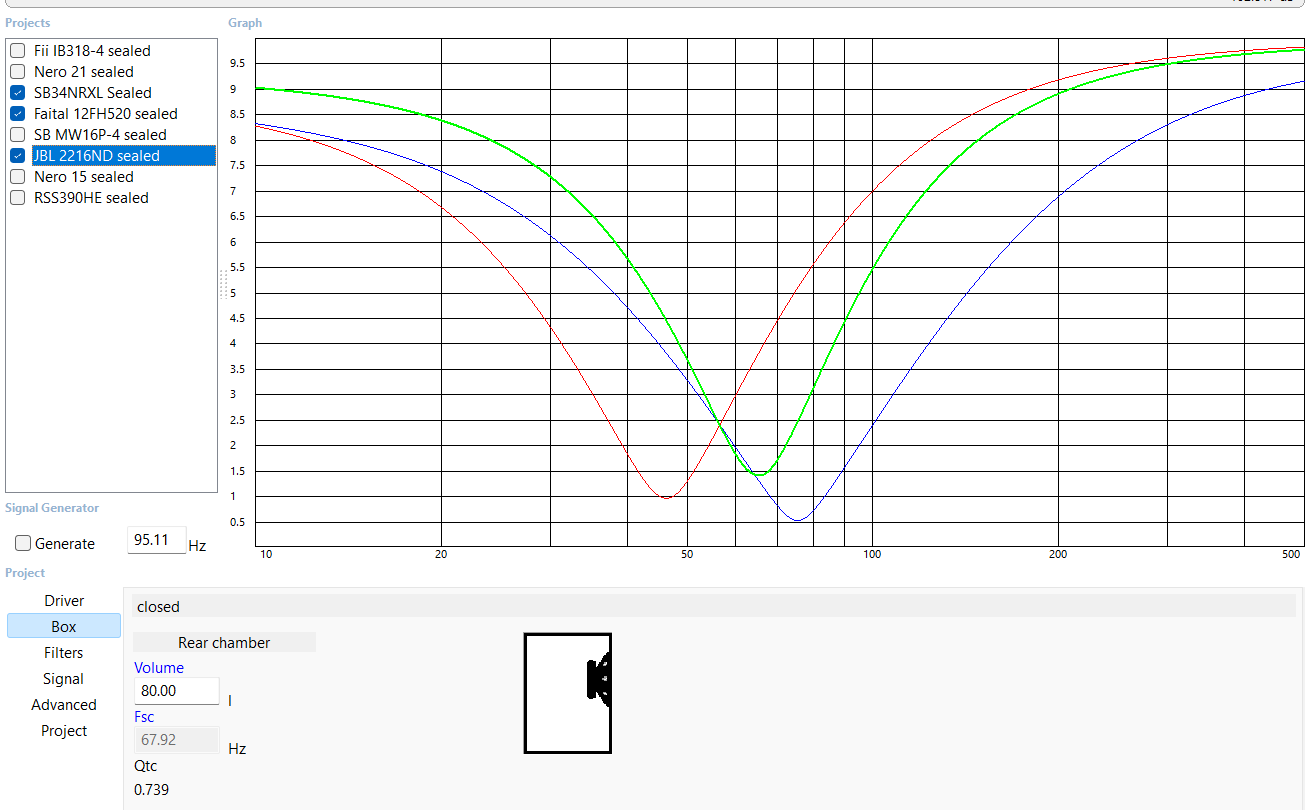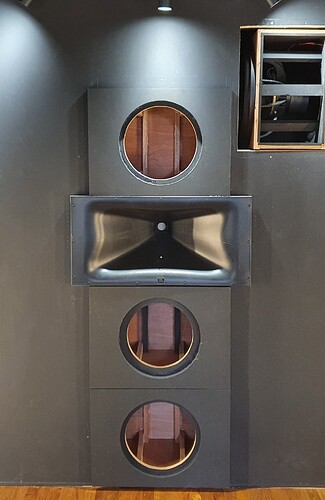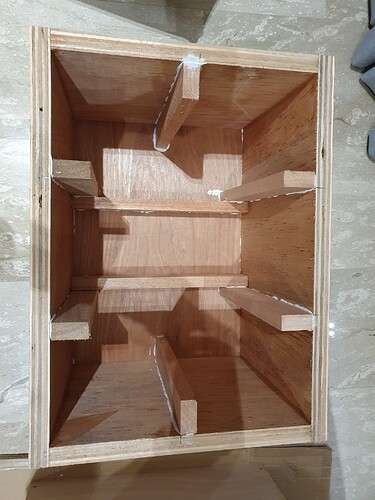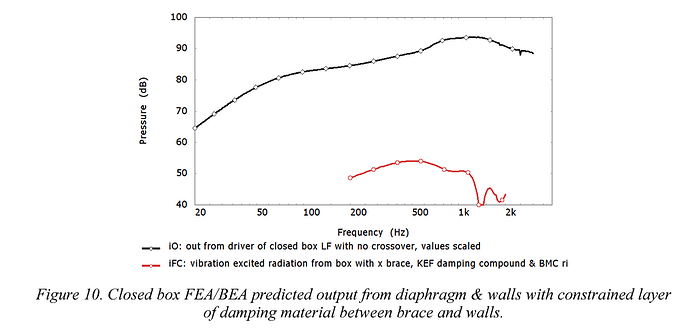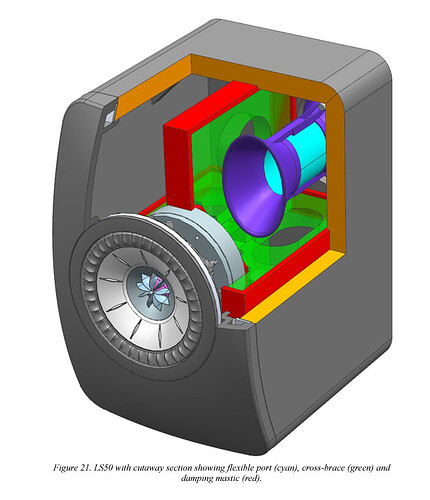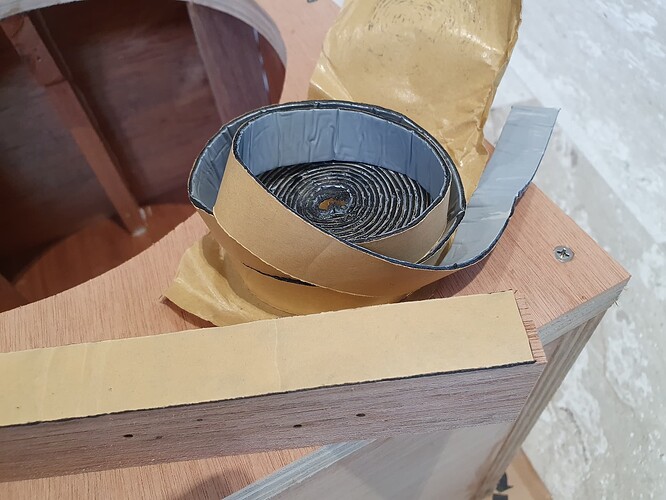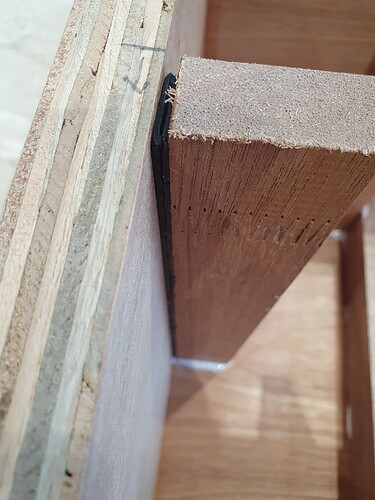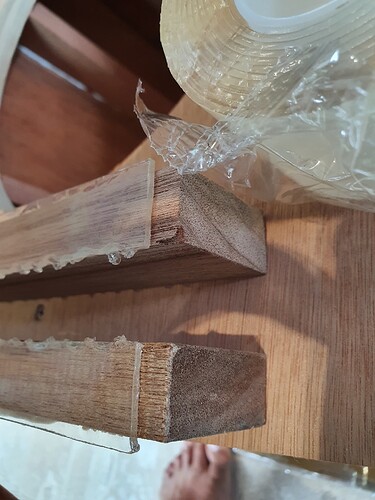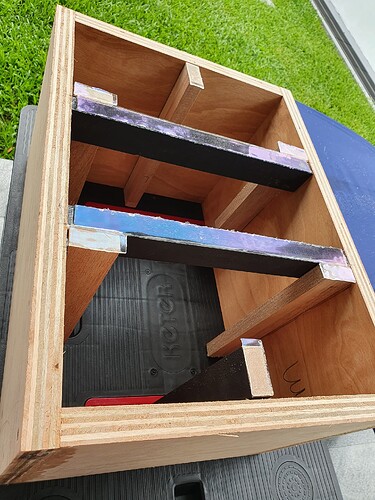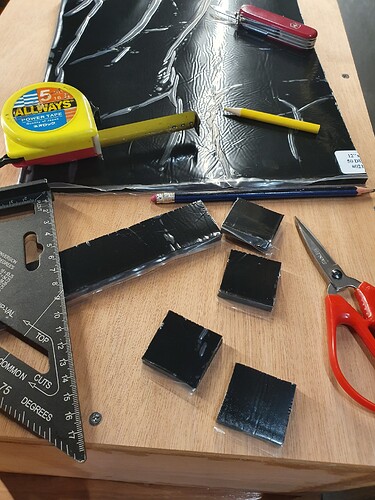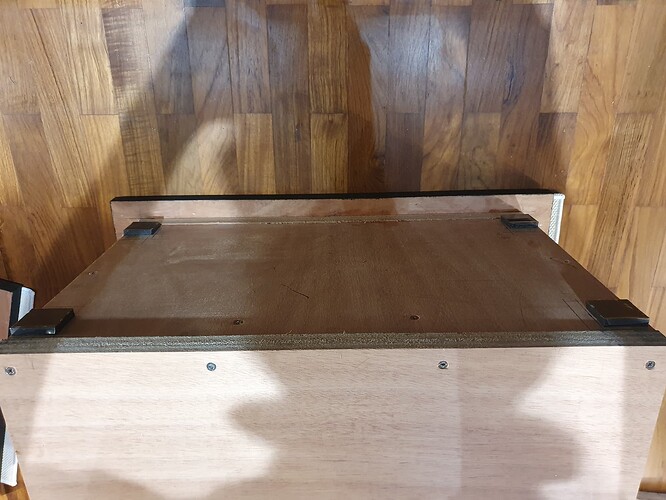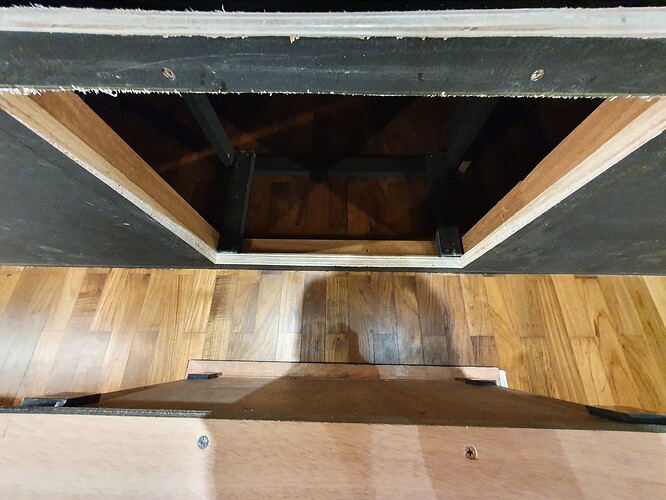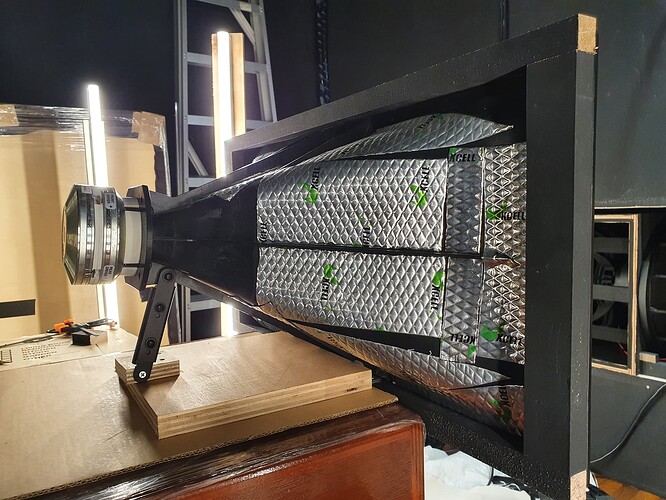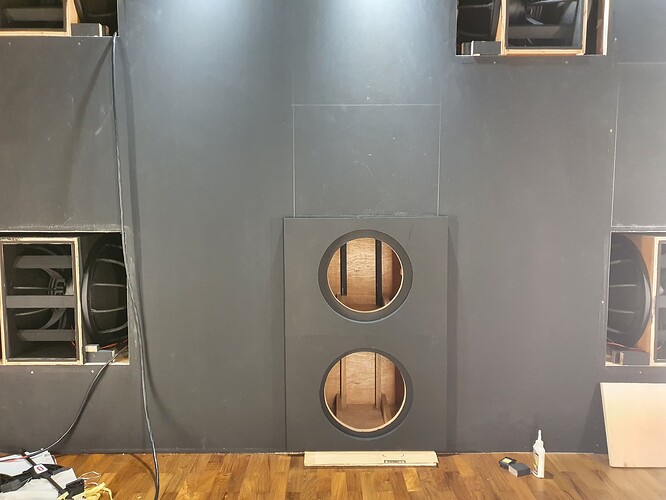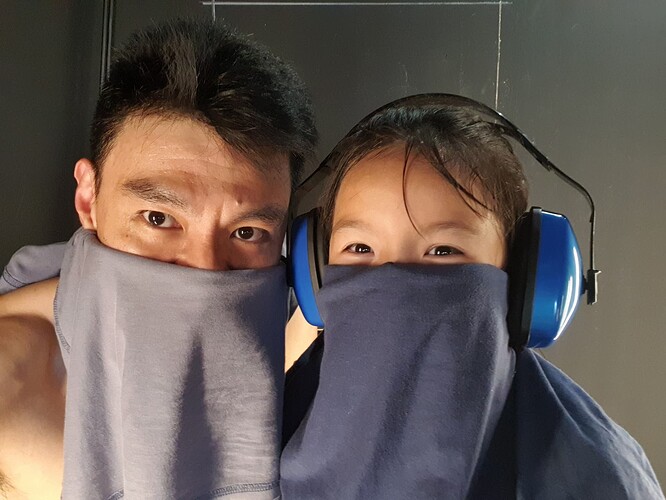That roughly closes the chapter on the Fi IB ULF subs. I think most of us here are pretty comfortable with the idea that different sub drivers have different sound character.
What i have surmised after lots of experimentation with different drivers, and studying T/S parameters, is that there are roughly 3 types of woofers or subwoofers.
First, the ULF drivers, true subs. These are the UM 15/18, JTR, the Stereo integrity, the Harbottles. The Fi IB318. They excel in low bass and ULF, but their handling of mid and upper bass, the speed transients etc often are not as good.
Next the Balanced subs. I was surprised how often i see this particular set of parameter optimisation, across seemingly vastly different subs. Examples are the the Peerless XXLS 12, Eminence Lab 12, JL 12W7, 13W7. Lots of 12 inch subwoofer drivers from Scan Speak and SB Acoustics fall into this category. I use this set for the woofers in my Mains channels.
The bass sound, as the name suggests, is balanced between low bass weight, and midbass speed. With quality drivers, they are very very satisfying and most will be very happy with these subs. The exception being the hardcore bass lovers who crave that ULF.
Finally, the midbass drivers. These are usually pro subs from B&C, etc. There are some very unique pro sub drivers that approach the balanced sub driver characteristic. These subs excel in midbass attack and transients. They hit hard. Too hard, for some. Just nice, for others.
Here’s a sim, showing how their impedance peak (resonant frequency) affects how they draw power from the amp. For a nominal 100W input, at the impedance peak frequency, they draw as little as 10W over a broad frequency range.
The resonant frequency are resultant in-cabinet, whether sealed or vented. These are sealed, for simplicity.
The ULF subs will be in the 30-40hz range, for the weight. The balanced subs are in the 40-50hz range. Nearer to 40hz, better weight. Nearer to 50hz, faster speed and transients. From what i could tell, the MK sub drivers are very close to 50hz.
So what i did was to augment the LFE ULF drivers with a pair of 21 in pro subs, namely the SB Audience Nero 21. They are available from the local distributor for a very attractive price. Plus there is hardly any shipping cost, vs ordering from overseas.
https://www.sbaudience.com/index.php/products/subwoofers/nero-21sw1100d/
Here’s a sim of 8x18, and 2x21 all driven with the same nominal 100W. The pair of Nero 21 hits 115dB at 60hz, with 100W. Actually the 8x18 are already at almost 118dB, but supposedly the bass character is different. Anyway, i wasn’t taking any chances.
Here we can also see the inherent differences in the drivers. All things equal, 8 drivers has 6dB more output than a pair. At 30Hz, the difference is max, with about 7dB more from Fi than from Nero. But the mid and upper bass is where these pro subs really shine.
If you subscribe to this school of reasoning, PSA and their current range of subs using custom DVC B&C 18DS115 and 21DS115 pro subs deliver the goods.
So, i ended up with the LFE system of 10 drivers, 8x 18 and 2x21. The other benefit of the baffle wall SBA, is the delays and setup are trivial. They are all on a single channel of the SP1-6000, wired into an approximately 2 ohm load, which is ideal for full power from the amp.
